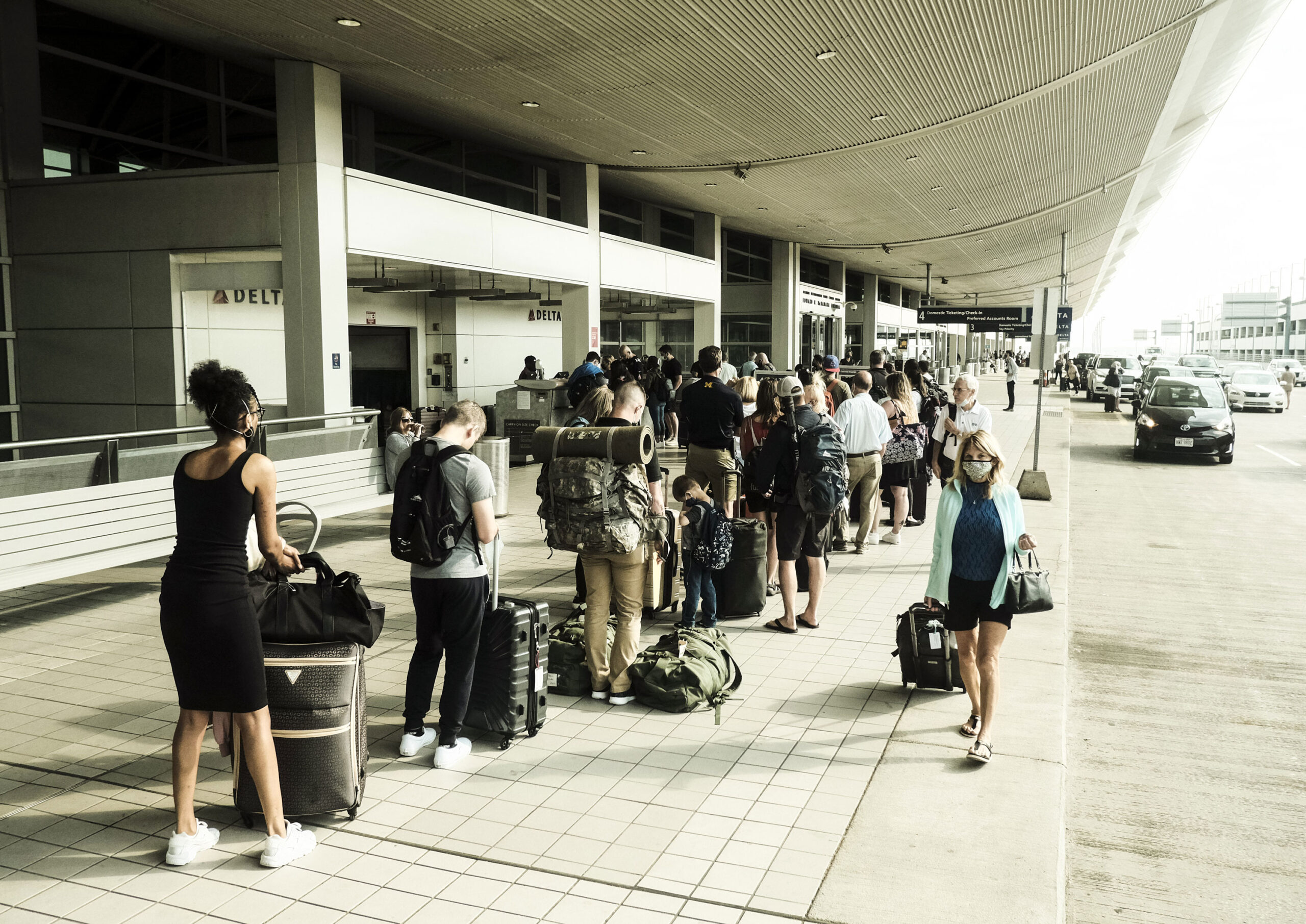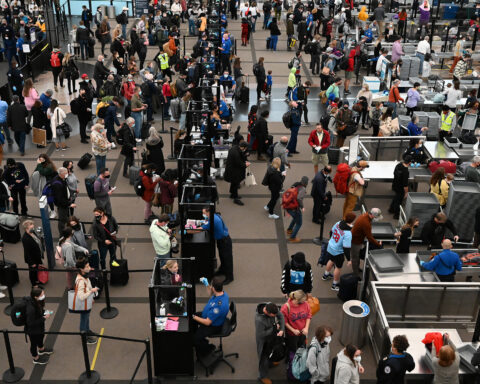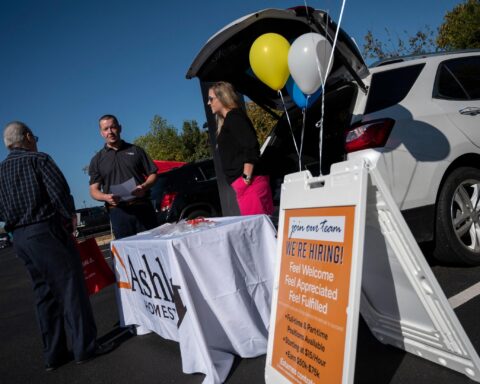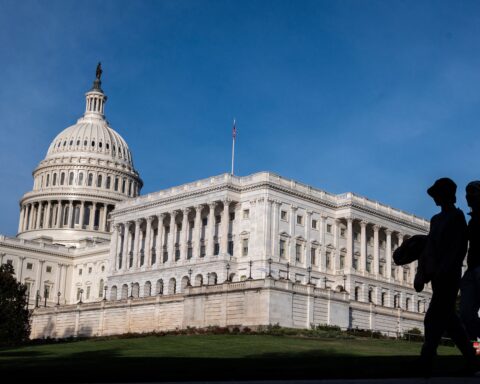As more Americans get vaccinated against Covid-19 and states and cities further ease pandemic restrictions, more people are flying for vacations, family visits or just getting away.
The Transportation Security Administration screened more than 2 million passengers Friday, the highest number since March 7 of last year, just before lockdowns and coronavirus restrictions started keeping people home.
The data confirms the recent upward air travel trend to levels not seen since before the pandemic: On June 11, 2019, the TSA screened 2.7 million people.
“The growing number of travelers demonstrates this country’s resilience and the high level of confidence in Covid-19 counter measures, to include ready access to vaccines,” acting TSA chief Darby LaJoye said in a statement.
Before the pandemic, the TSA screened on average between 2 and 2.5 million travelers per day.
National parks welcoming hundreds of thousands every month
Another indicator that Americans are getting back out and about: National parks are citing spikes in attendance.
Last month, Yellowstone National Park saw the most visitors it had ever recorded for the month of May, with 658,513 visits — an 11% increase over the previous May record, set in 2016.
It’s also more than four times the number of visitors Yellowstone had in May 2020, when the park was closed for the first half of the month due to Covid-19.
Grand Teton National Park, also in Wyoming, set a May record as well. It had 363,712 visitors last month, 30% above the last pre-pandemic May in 2019. Numbers are likely to go even higher further into the summer.
“Historically, July and August have been the busiest months of the year at the park,” Grand Teton said in a press release Friday.
Delta variant likely to become dominant strain, official says
As travel sets pandemic records, there are warnings that parts of the country could see outbreaks of the B.1.617.2 Covid-19 strain, or Delta variant.
The variant was first detected in India and is about 60% more transmissible than the B.117 or Alpha variant — which was first identified in the UK. The Delta variant makes up about 10% of infections in the United States, according to Dr. Scott Gottlieb, a former commissioner of the US Food and Drug Administration.
“It’s doubling every two weeks, so it’s probably going to become the dominant strain here in the United States,” Gottlieb said in a CBS interview Sunday.
“That doesn’t mean that we’re going to see a sharp uptick in infections, but it does mean that this is going to take over,” he added.
Gottleib said existing Covid-19 vaccines appear to provide some protection against the variant.
“I think in parts of the country where you have less vaccination — particularly in parts of the South, where you have some cities where vaccination rates are low — there’s a risk that you could see outbreaks with this new variant,” Gottlieb said.
Vaccines recommended despite rare heart inflammation risk
More than 309 million Covid-19 vaccine doses have been administered in the US, according to data published Sunday by the US Centers for Disease Control and Prevention.
More than 143.9 million Americans — 43.4% of the population — are fully vaccinated, and 52.4% have had one dose of a Covid-19 vaccine, according to CDC data. More than 64% of adults have received at least one dose and 54.1% are fully vaccinated. The Biden administration aims to vaccinate 70% of adults with at least one dose by July 4.
The American Heart Association recommended on Saturday that everyone eligible should get a coronavirus vaccine, despite worries about a possible increased risk of heart inflammation.
The CDC has scheduled an emergency meeting of its vaccine advisers for next week to discuss a possible link between the vaccines and inflammatory conditions known as myocarditis and pericarditis, mostly among younger men.
It noted the reports of cases were very rare, and 81% of the 270 patients under 30 with suspected myocarditis related to vaccination have had a full recovery.
“We remain confident that the benefits of vaccination far exceed the very unusual risks. The risks of Covid-19 infection include its potentially fatal consequences and the potential long-term health effects that are still revealing themselves, including lingering consequences affecting the heart, brain, vascular system and other organs after infection,” the association said.
AAP issues new guidelines for kids in sports
Many kids’ sports are getting back to full speed in the summer months, and the American Academy of Pediatrics has issued updated guidelines for children returning to sports and other activities.
Unvaccinated athletes should wear a mask for all indoor activity except situations in which a mask may pose a hazard. For outdoor activities, AAP recommends that unvaccinated athletes wear a mask while on the sidelines and in all activities involving sustained contact of 3 feet or less.
All eligible athletes should get a Covid-19 vaccine as soon as possible, the AAP said in a statement. Currently, only the Pfizer/BioNTech vaccine is approved for use in people 12 and older. Once people are vaccinated, they are advised to follow CDC guidance for vaccinated individuals, which say they do not need to wear a mask in most situations.
As the US Food and Drug Administration considers what data is needed to extend authorization of coronavirus vaccines to children under 12, a top FDA official reminded the panel that while Covid-19 might not have hit children as hard as it has hit adults, children do die of the virus.
Several advisers were cautious about the idea of extending vaccine authorization to children and mentioned that the virus has caused serious disease in children as often as it has among adults.
“I just want to reiterate something here — this is an illness that takes the lives of children. We know that over 300 children have died in the pandemic so far,” Dr. Peter Marks, director of FDA’s Center for Biologics Evaluation and Research, said Thursday.
“All of us have the goal to eliminate any vaccine-preventable deaths that we can with a reasonable benefit-risk.”
Schools were open in April yet hesitancy may remain, data shows
While most schools across the country are done for the summer, the Department of Education said more than 90% of schools were open for fourth-graders and eighth-graders for hybrid or full in-person learning in April, according to recently released department data of the two grades. However, enrollment numbers showed that many students were not making use of those options.
For fourth-grade, 97% of schools were open or offering any form of in-person learning for the month of April, an increase of nine percentage points from March. Sixty percent of schools offered full time in-person classes, but only 51% of fourth-graders attended in-person full time, 23% attended hybrid, and 26% were remote only, according to DOE data. These trends have been on a steady rise since the DOE started tracking in January.
For eighth-grade, 93% of schools were open for full in-person or hybrid learning, with 57% of schools giving students a full five-day a week option. Just 41% of eighth-graders attended school full-time in April, 26% attended hybrid, and 33% are still fully remote.
“Greater numbers of school buildings continue to open their doors to welcome back students in-person,” said Mark Schneider, director of IES, the research, statistics, and evaluation arm of the Department of Education.
“We should celebrate the substantial progress on a return to normalcy while also redoubling our efforts to ensure that the most high-need students, students who have already borne the brunt of the coronavirus and its effects, don’t get left behind.”
There is some disproportionality along racial demographics with returns to in-person learning, according to DOE data, as a higher percentage of White students were attending school full-time when compared to Black, Hispanic and Asian students.







